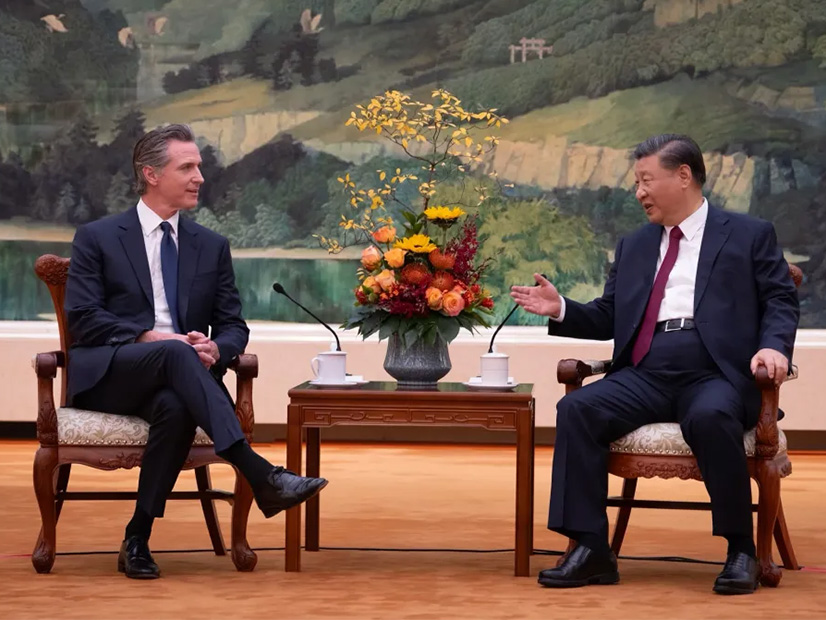
Saying “divorce is not an option,” California Gov. Gavin Newsom met with Chinese President Xi Jinping in Beijing on Wednesday to bolster climate cooperation between his state and the People’s Republic of China.
The talks with Xi and other Chinese officials focused mainly on climate and economic issues, but also touched on human rights and the fentanyl crisis, according to the governor’s office.
While noting “major differences,” Newsom said working together on climate change “can be the bridge we’ve been missing.”
“I made it clear to Chinese leaders that California will remain a stable, strong and reliable partner, particularly on low-carbon, green growth,” Newsom said in a statement.
Also Wednesday, Newsom signed an agreement with Chairman Zheng Shanjie from the National Development and Reform Commission to combat climate change and advance clean energy development.
The climate agreement is similar to those California has entered into recently with other governments, including Canada, Australia, New Zealand, Japan, the Netherlands and the Chinese province of Hainan. (See Calif. Enters Climate Agreement with China’s Hainan Province; California, Australia Forge Climate Pact.)
China is the world’s largest emitter of greenhouse gases and is responsible for almost a third of global GHG emissions. The U.S. is the second-largest GHG emitter, with roughly half the annual emissions of China in 2020.
About half of China’s GHG emissions come from its power sector, and the nation continues to add new coal plants.
California aims to reach carbon neutrality by 2045; China has set a 2060 goal.
Citing the impacts of the climate crisis on California, including floods and wildfires, Newsom called for efforts to meet carbon neutrality goals earlier. He emphasized the urgent need to transition away from fossil fuels.
As part of the discussion, Newsom touted battery storage technology. California has increased battery storage resources from 770 MW in 2019 to 6,600 MW as of this month, a number expected to grow to 8,500 MW by the end of the year, the state announced this week.
The California-China cooperation aims to reduce carbon emissions while fostering economic growth. The governments will work to accelerate the clean energy transition, including zero-emission vehicles, offshore wind and advanced energy storage technologies.
Newsom’s meeting with Xi on Wednesday was part of the governor’s weeklong trip to China.
On Tuesday, he visited China’s Greater Bay Area, a region consisting of Hong Kong, Macao and nine major cities. There, he visited the world’s first zero-emission city bus fleet, and the state entered a climate partnership with Guangdong Province.
The trip comes at a time of tense U.S.-China relations, and some say the visit could be politically risky for Newsom.
Given the complexities of the U.S.-China relationship, some see “subnational” efforts as key to climate action.
“The states really are where anything substantive is going to happen,” David Victor, co-director of the Deep Decarbonization Initiative at the University of California, San Diego, told NBC News.
Newsom coordinated his travel with the White House, Politico reported, and he was accompanied by Nicholas Burns, the U.S. ambassador to China.
“This was a very positive and consequential day for the United States,” Burns said in a statement following Wednesday’s meetings.


